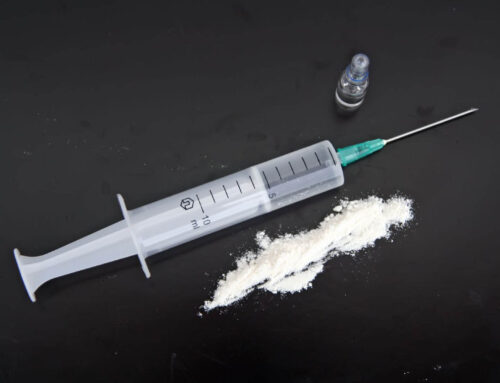
Psychiatrist Appointment: Obsessive-Compulsive Disorder
Clinical Symptom Description
Obsessive-compulsive disorder (OCD) is a chronic and debilitating mental health condition characterized by obsessions (intrusive thoughts) and compulsions (repetitive actions or rituals). These symptoms significantly disrupt daily functioning, causing considerable distress.
- Obsessions are intrusive, unwanted, and recurring thoughts, images, or impulses that often cause severe anxiety and fear. For example, a person may worry about contamination by germs, the safety of loved ones, or committing an immoral act.
- Compulsions are repetitive actions or mental rituals performed to reduce the anxiety caused by obsessions. Examples include frequent handwashing, checking doors and switches, counting in specific patterns, or repeating words. Despite recognizing the irrationality of their actions, individuals are unable to stop due to fear and inner tension.
For a diagnosis of OCD, symptoms must occupy more than an hour a day and significantly impair the quality of life. In severe cases, individuals may spend several hours a day on rituals, making normal social and professional functioning difficult.
Disease Prevalence
Obsessive-compulsive disorder affects 2–3% of the population over a lifetime, making it a relatively common mental health condition. According to the World Health Organization (WHO), OCD is among the top ten leading causes of disability from mental illnesses.
The onset of the disorder often occurs during adolescence or early adulthood. Men typically experience symptoms at a younger age—before 15 years—whereas women are more likely to manifest the disorder between 20 and 30 years. However, the disorder occurs with roughly equal frequency in both sexes.
Without appropriate treatment, OCD follows a chronic course with periods of exacerbation and remission. However, early diagnosis and comprehensive treatment can significantly reduce symptom severity and improve patients’ quality of life.
Risks and Predispositions
Obsessive-compulsive disorder develops due to multifactorial causes, including:
- Genetic Factors: Studies show that having a close relative with OCD increases the risk of developing the disorder by 2–4 times. Genetic predisposition plays an important role in the onset of the condition.
- Biological Causes: Imbalances in neurotransmitters, particularly serotonin, affect the functioning of specific brain areas (frontal lobes and basal ganglia). People with OCD are also found to have hyperactivity in these brain regions.
- Psychosocial Factors: Stressful events, such as the death of a loved one, divorce, childhood abuse, or chronic anxiety, may trigger the onset of the disorder in predisposed individuals.
- Personality Traits: Individuals with high levels of anxiety, perfectionism, or excessive need for control are more prone to developing OCD.
Treatment Methods
Effective treatment for obsessive-compulsive disorder requires a comprehensive approach involving pharmacotherapy and psychotherapy.
- Pharmacological Treatment
The foundation of medication-based treatment is selective serotonin reuptake inhibitors (SSRIs)—a class of antidepressants that enhance serotonin metabolism in the brain:
-
- Commonly used medications include fluoxetine, sertraline, fluvoxamine, paroxetine, and escitalopram. These drugs reduce the severity of obsessions and compulsions in most patients.
- In some cases, when resistant to treatment, antipsychotics (e.g., risperidone or aripiprazole) may be used in combination with antidepressants.
- Psychotherapy
The most effective method is cognitive-behavioral therapy (CBT) with exposure and response prevention (ERP). This approach involves gradually and systematically exposing patients to situations that trigger obsessions while helping them refrain from performing compulsive actions.
-
- Cognitive therapy helps patients identify and change irrational beliefs underlying their obsessions and compulsions.
- Family therapy is an important addition, aimed at supporting loved ones and teaching them effective interaction strategies with the patient.
- Additional Methods
In complex and resistant cases, transcranial magnetic stimulation (TMS) or deep brain stimulation may be used; however, these methods are applied sparingly.
The Role of the Psychiatrist in OCD Diagnosis and Treatment
The psychiatrist plays a central role in managing patients with obsessive-compulsive disorder. The specialist’s main tasks include:
- Diagnosis of the Disorder: The psychiatrist conducts clinical interviews, uses symptom severity assessment scales such as the Yale-Brown Obsessive Compulsive Scale (Y-BOCS), and rules out other mental disorders.
- Treatment Prescription: The psychiatrist selects the optimal treatment plan, including medications and psychotherapy, and monitors the effectiveness of the therapy, adjusting it as necessary.
- Patient and Family Education: Psychoeducation helps patients better understand the nature of the disorder and actively participate in the treatment process.
- Long-term Monitoring: OCD often follows a chronic course, so regular monitoring by a psychiatrist is essential to prevent relapses and maintain stability.
Conclusion
Obsessive-compulsive disorder is a severe and chronic condition that can significantly impair a patient’s quality of life. However, modern treatment methods, including pharmacology and cognitive-behavioral therapy, allow for significant symptom improvement. The psychiatrist plays a key role in diagnosing and managing OCD, coordinating treatment, and supporting long-term remission. A comprehensive approach and support from loved ones help patients adapt to life and regain their social and professional functions.
Psychiatrist Appointment: If you need to consult a psychiatrist or receive psychiatric care for obsessive-compulsive disorder, choose a specialist and book an appointment. During the consultation, our psychiatrist will help address your mental health concerns and find suitable solutions.



